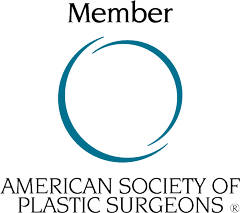The short answer is yes, and we are using Fat grafts and Adipose stem cells more and more for this purpose. We are just beginning to understand how this process works, and it has to do with the nature of scar tissue itself and the basic behaviors of stem cells.
How does a scar form?
Let’s first describe how a scar forms. After an injury, whether it was radiation therapy, burn, or trauma, the body responds by activating a sequence of responses. The responses can be summarized in three stages:
Stage 1 – Damaged tissue destroyed
First the body tries to get rid of the damaged tissue. It does this by the inflammatory process, which destroys bacteria, foreign objects as well as partially damaged native tissues. If the damage is severe, a lot of native tissue can be destroyed by inflammation causing a tissue deficit.
Stage 2 – New cells for repair
The second stage of healing is the proliferative phase where the body brings in new cells to begin the repair process. It is in this phase that there is a lot of collagen deposition. It is this abnormal amount of collagen that makes the tissue stiff and bulky.
Stage 3 – Remodeling Phase
The final stage of healing is the remodeling phase. Here the body slowly pares away the excess collagen and restores the surrounding tissues to normal function. That is why in the normal scar process the scar initially feels thick but then softens with time.
How do fat grafts and stem cells help?


Plastic surgeons have been performing Fat grafting, aka Fat transfer, for more than 100 years. Fat grafts contain a small population of adipose stem cells, and we are currently using them to help heal scars.
To perform a Fat transfer procedure, adipose tissue is extracted from unwanted areas of your body, processed to remove the mature and dead cells, and reinjected into the damaged scar.
The stem cells in a fat graft help to heal a scar in several ways:
- Stem cells have anti-inflammatory properties that prevent excessive scarring
- Stem cells help replenish normal cells in the tissue by differentiation or directing other cells in the tissue to multiply. Since the normal population of cells under the skin is fat tissue anyways, the fat graft itself provides most of the tissue that is needed.
- Adipose stem cells dissolve the excess collagen in scar tissue by secreting large amounts of enzymes whose specific function is to dissolve scar tissue.
Carefully processed fat grafts can restore the missing tissue under the skin, dissolve the tight and bulky scar tissue, as well as helping restore better function to tissues surrounding the scar. All of these things help to repair the scar.
Supercharged fat grafts
If certain enzymes are added to adipose tissue during processing, a 10 fold higher population of stem cells can be yielded. This is referred to as the Stromal Vascular Fraction (SVF). Using the SVF with fat grafts is a way to supercharge the healing process. many clinical trials and investigators are currently using Stromal Vascular Fraction (SVF) with Fat Grafting for an even better scar result!




Shane says:
Dr. Ricardo L. Rodriguez says:
Gio says:
Dr. Ricardo L Rodriguez says:
Gio says:
Dr. Ricardo L Rodriguez says:
Gio says:
Dr. Ricardo L Rodriguez says:
Gio says:
Dr. Ricardo L Rodriguez says:
Yohannes Demissie says:
Dr. Ricardo L Rodriguez says:
Eric says:
Eric says:
Dr. Ricardo L Rodriguez says:
Eric says:
Dr. Ricardo L Rodriguez says:
Eric says:
Dr. Ricardo L Rodriguez says:
Eric says:
Dr. Ricardo L Rodriguez says:
Eric says:
Eric says:
Dr. Ricardo L Rodriguez says:
Eric says:
Dr. Ricardo L Rodriguez says:
M Bob says:
Dr. Ricardo L Rodriguez says:
M Bob says:
Dr. Ricardo L Rodriguez says:
M Bob says:
Dr. Ricardo L Rodriguez says:
Abdul Halim says:
Dr. Ricardo L Rodriguez says: